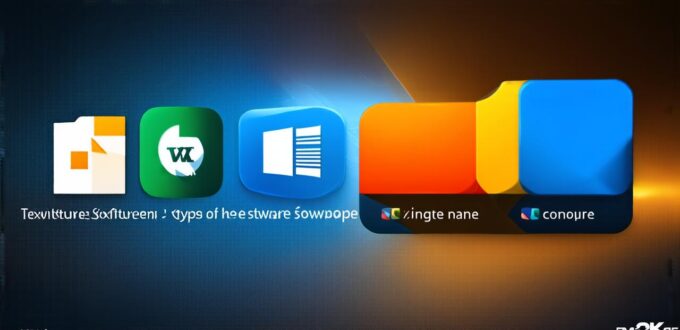
1. Operating Systems
Operating systems (OS) are the foundation upon which all other software applications run. They manage system resources such as memory, storage, and input/output devices and provide a platform for running programs. Examples of popular operating systems include Windows, macOS, Linux, iOS, and Android.
2. Productivity Software
Productivity software is designed to help users create, edit, and share digital content such as documents, presentations, spreadsheets, and images. These applications often have advanced features such as collaboration tools, version control, and templates to streamline workflows. Examples of popular productivity software include Microsoft Office, Google Workspace, and Adobe Creative Cloud.
3. Multimedia Software
Multimedia software is used for creating and editing audio, video, and graphic files. These applications often have advanced features such as sound effects, transitions, and filters to enhance the final product. Examples of popular multimedia software include Adobe Premiere Pro, Final Cut Pro X, and Audacity.
4. Scientific Software
Scientific software is designed for use in research and scientific fields to perform complex calculations and simulations. These applications often have specialized features such as data analysis tools, visualization tools, and equation editors. Examples of popular scientific software include MATLAB, Mathematica, and Maple.
5. Gaming Software
Gaming software is used to create and run video games on various platforms. These applications often have advanced graphics and sound capabilities to provide a realistic gaming experience. Examples of popular gaming software include Unity, Unreal Engine, and Godot.
Case Study: Using Productivity Software in the Film Industry
The film industry relies heavily on productivity software to streamline workflows and improve collaboration between teams. For example, filmmakers use specialized multimedia software such as Adobe Premiere Pro to edit video footage and add sound effects, transitions, and filters.
They also use project management tools such as Trello and Asana to track progress and assign tasks.
One case study of using productivity software in the film industry is that of the production team for the 2019 film “Joker”. The team used a combination of multimedia software, such as Adobe Premiere Pro, and collaboration tools, such as Slack, to communicate and share files with each other. They also used specialized software such as Autodesk Flame to perform advanced visual effects and color grading.
According to the film’s cinematographer, Hoyte van Hoytema, “The collaboration tools made it much easier for us to work remotely and share files with each other. We could also track progress and assign tasks more effectively.”
Research: The Impact of Software on Productivity
Numerous studies have shown that using software applications can significantly improve productivity in various fields. For example, a study conducted by the University of Maryland found that using productivity software increased employee productivity by 30%. Another study conducted by the University of California, Irvine, found that using time-management tools reduced stress levels and improved work-life balance.
However, it’s important to note that not all software applications are created equal. Some applications may be more efficient and user-friendly than others, depending on the task at hand. It’s essential to research and choose the right software for your specific needs and requirements.
Expert Opinions: The Future of Software
The future of computer software is likely to continue evolving as technology advances. Experts predict that we will see more integration between different types of software, such as productivity tools with collaboration features and multimedia software with data analysis capabilities. They also expect the rise of cloud-based software and artificial intelligence to further enhance productivity and efficiency.
FAQs: Common Software Questions Answered
1. What is the difference between operating systems and applications?
Operating systems manage system resources and provide a platform for running programs, while applications are designed to perform specific tasks such as word processing or video editing.
2. What is productivity software used for?
Productivity software is used for creating, editing, and sharing digital content such as documents, presentations, spreadsheets, and images. It often has advanced features such as collaboration tools, version control, and templates to streamline workflows.
3. What is multimedia software used for?
Multimedia software is used for creating and editing audio, video, and graphic files. These applications often have advanced features such as sound effects, transitions, and filters to enhance the final product.
4. What is scientific software used for?
Scientific software is designed for use in research and scientific fields to perform complex calculations and simulations. It often has specialized features such as data analysis tools, visualization tools, and equation editors.
5. What is gaming software used for?
Gaming software is used to create and run video games on various platforms. These applications often have advanced graphics and sound capabilities to provide a realistic gaming experience.
Conclusion: The Importance of Choosing the Right Software
In conclusion, choosing the right software can significantly improve productivity in various fields and industries. Whether you’re a filmmaker or a scientist, there is a type of software that can help streamline your workflow and enhance your efficiency. By understanding the different types of software available and their specific features and capabilities, you can make an informed decision and choose the right tool for your needs.
